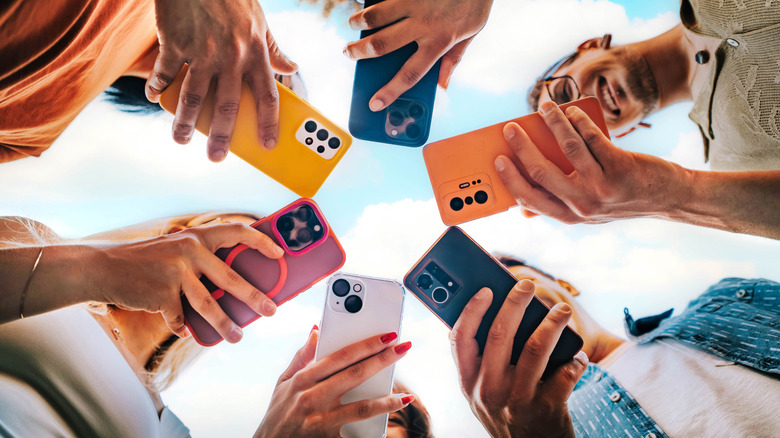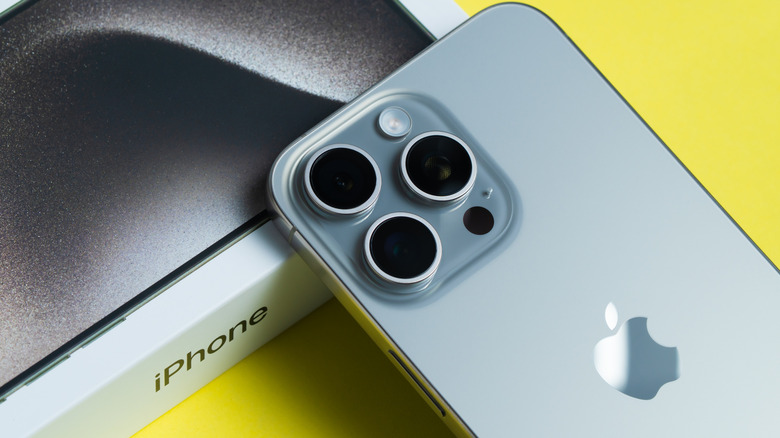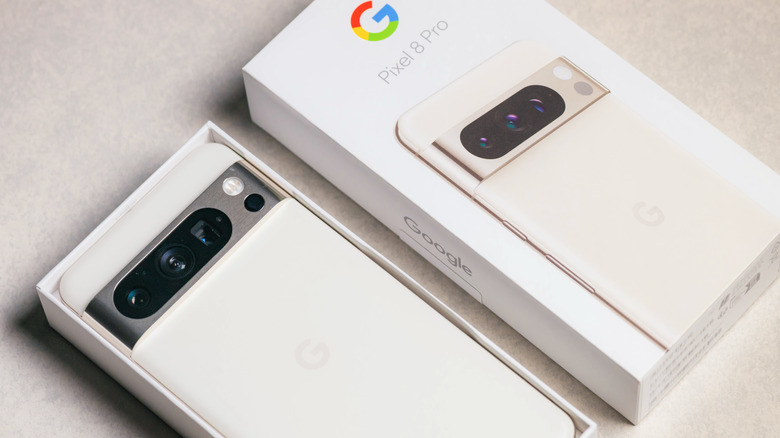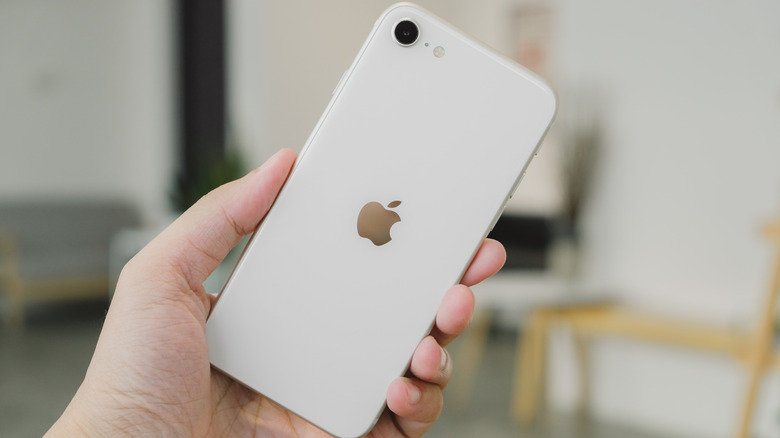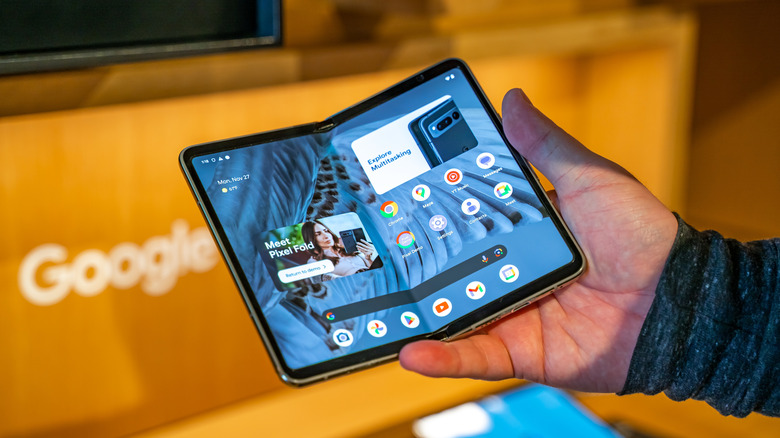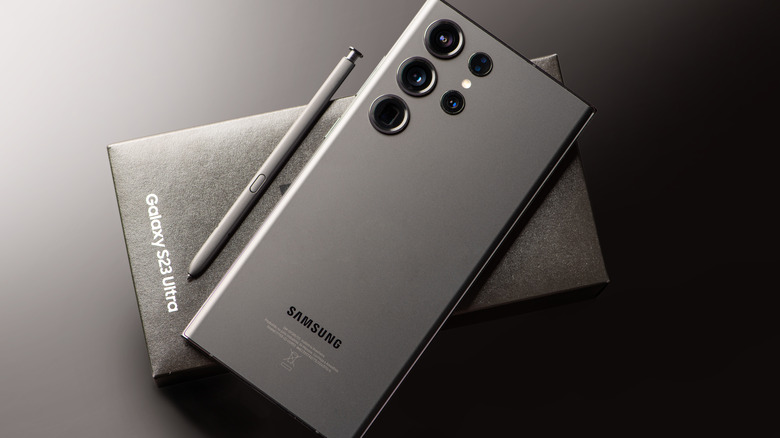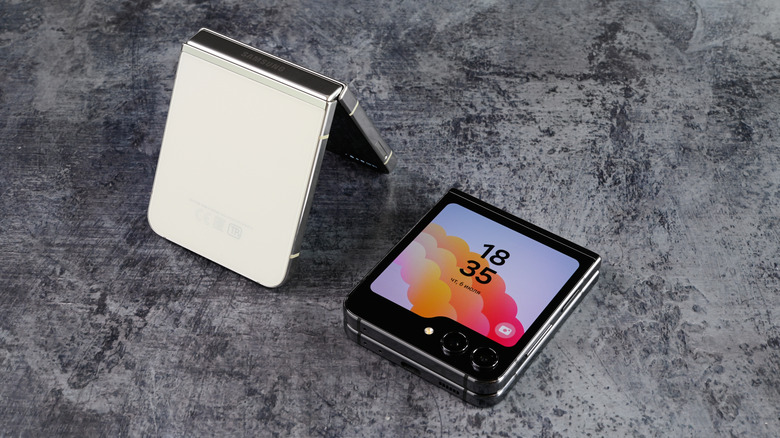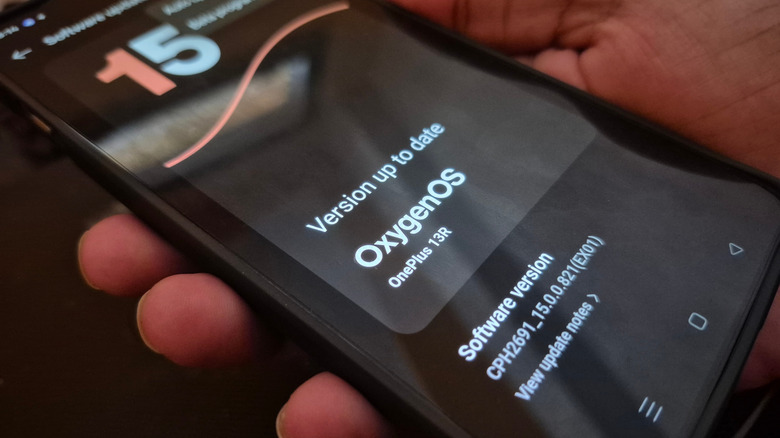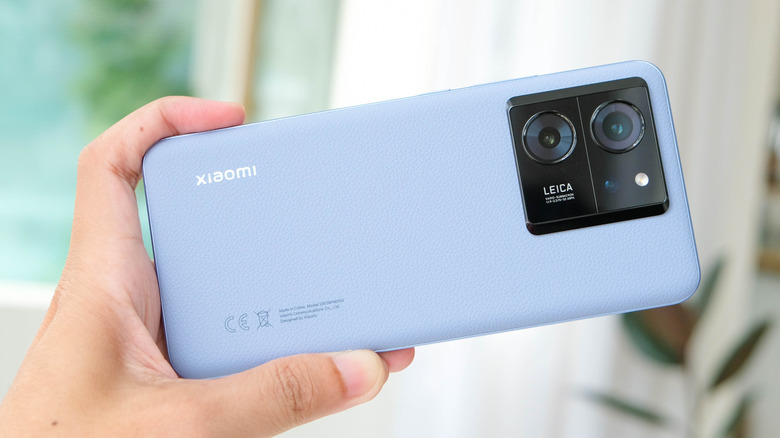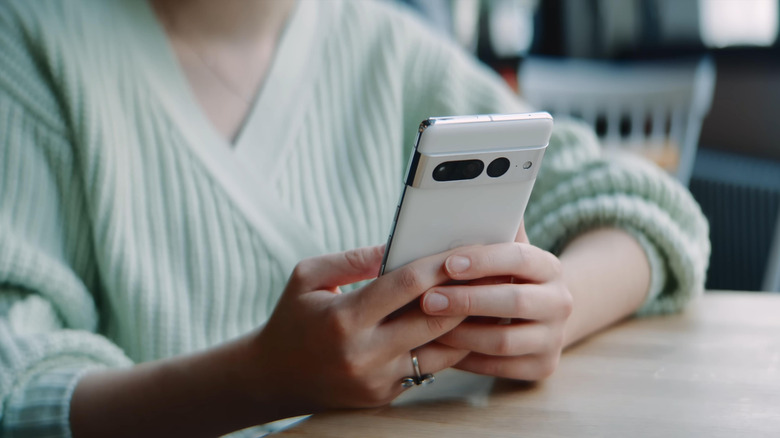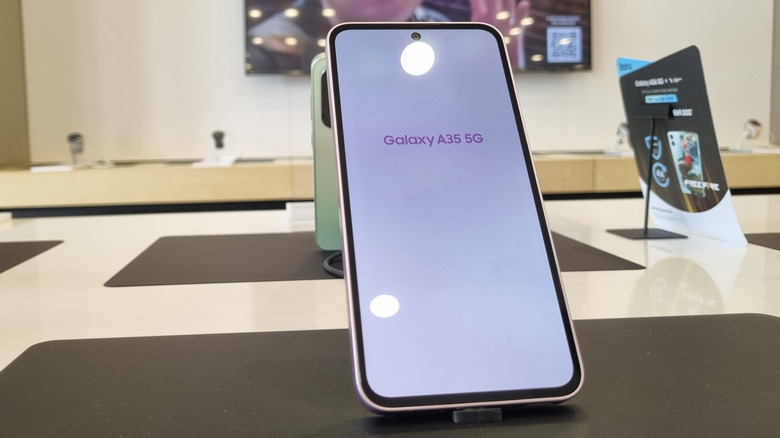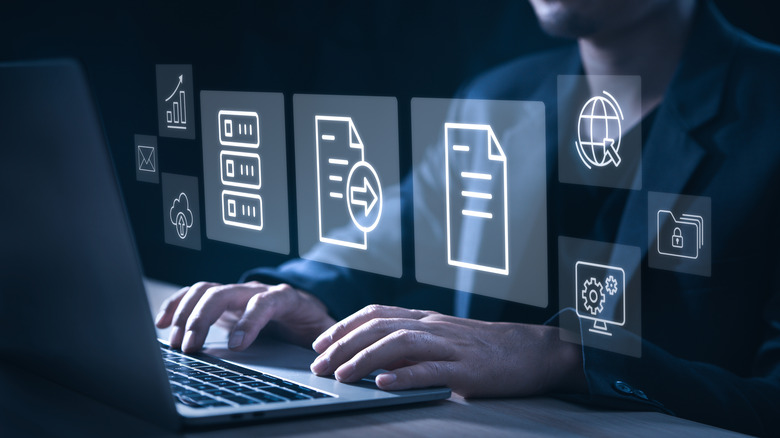10 Used Phones That Are Totally Worth It
We may receive a commission on purchases made from links.
A new top-tier phone with all the hype, specifications, and design makes it an appealing pocket-sized powerhouse, but the price puts it out of reach for many buyers. For example, the iPhone 17 Pro starts at $1,099, and the iPhone 17 Pro Max starts at $1,199, with higher storage configurations costing more. Although some carriers offer discounts and trade-ins, these often involve SIM locks, a major drawback. That's why many people turn to used phones. Smartphones have high depreciation, and the moment you unbox it, the price drops even if you never use it. Therefore, buying a used phone can not only help you save money, but also gain access to premium features for less.
Along with everything to consider when buying a new phone, you need to look at a few other factors when going for a used phone. Including the phone's physical condition, battery health, years of updates remaining, and whether it's carrier-unlocked. Additionally, you must check if it has a clean IMEI to ensure it isn't stolen or blacklisted, so that you can activate it with a compatible carrier.
While refurbished phones are promising, they are often a bit more expensive than used phones. Besides, even after years of use, flagships from Apple, Samsung, or Google can still outshine newer mid-range phones. For instance, the 2023 Samsung Galaxy S23 Ultra delivered about two hours more battery life than the newer Galaxy A36, even though both feature 5,000 mAh batteries. Let's explore ten used phones that still pack a punch.
Apple iPhone 15 and 15 Pro (2023)
You can always bet on an iPhone, even after years of releases, and what's better than getting it from a used market at lower prices? The iPhone 15 lineup is a perfect example. Both the iPhone 15 and 15 Pro deliver cutting-edge features that still feel fresh.
With the standard iPhone 15, you get Apple's powerful A16 Bionic chip, along with a Super Retina XDR display and a studio-quality camera setup. Plus, you can use a USB-C connector for charging, which was lacking in the predecessor. A shortcoming is charging speeds as the phone only supports a 20W power adapter, which can require over an hour to provide a full charge.
If you're a power user, the iPhone 15 Pro is an impressive smartphone. You get a more durable and lightweight titanium body. Plus, it's powered by an A17 Pro chip for console-quality gaming and faster multitasking. On top of that, ProMotion technology makes the display buttery smooth, while the camera system ensures stunning captures with impressive video recording and stabilization that can rival dedicated cameras.
Although original pricing exceeds mid-range expectations, starting at $799 for the iPhone 15 and $999 for the 15 Pro at launch, you can get a used iPhone 15 for between $350 and $400 today, while a 15 Pro averages $450. With a minimum of five years of software support, you're getting top features that should hold up well into the future, without paying flagship prices.
Google Pixel 8 and 8 Pro (2023)
If you're looking for a pure Android experience, the Google Pixel lineup remains one of the best options available. You get Google's smartest software baked into premium hardware. Even the aging Pixel 8 lineup is hard to beat, offering Google's AI-powered features like Magic Editor and Photo Unblur.
Unlike many Android phones, Google Pixel phones don't come with bloatware, and you'll only find essential apps. The Google Tensor G3 chip is designed to easily handle multiple demanding tasks and the Pixel 8 boasts a 6.2-inch OLED display, which delivers vivid colors and supports HDR10+ with peak brightness of up to 2,000 nits.
You can push the Pixel experience further with the Pixel 8 Pro. Here, you get a larger and sharper LTPO OLED display with a 120Hz refresh rate, which offers smooth scrolling. Thanks to Google's computational photography, you can capture crisp, detailed shots even in low light. The Pixel's advanced image processing makes it capable of rivaling DSLR-quality photos.
In the used market, you can typically find the Google Pixel 8 for around $300 and the Pixel 8 Pro in the range of $350 to $400. With seven years of promised software support, buying these used devices means you'll still get plenty of updates. Considering their powerful Tensor processor and computational photography, used Pixel phones can deliver camera results and benchmark scores that rival newer mid-range devices like the Samsung Galaxy A56.
Apple iPhone SE (2022)
The trend for smaller phones is fading away, with only a few options available, including the iPhone SE. If you miss the days of small iPhones that slip right into your pocket, the SE brings that back without compromising on speed. With a screen size of 4.7 inches, it packs surprising power into a compact frame. The iPhone SE blends iPhone's old-school design elements with a modern, powerful processor. The lightweight design features the A15 Bionic chip with 5G support, and Touch ID adds a classic iPhone feel.
Moving to the camera, the iPhone SE delivers good photos in daylight, but struggles to capture clear shots in low-light or night mode. Nevertheless, a used SE can get you an iPhone experience without shelling out too much money. This device is one of the most affordable entries into Apple's ecosystem of iMessage, FaceTime, and the App Store.
When released, the phone started at $429. However, you can get a used iPhone SE for under $150. Since Apple supports its phones for years with iOS updates, even a used iPhone SE should have plenty of life left in it. Before buying, confirm that the device is not carrier locked, so that you can insert a compatible SIM card.
Google Pixel Fold (2023)
For those who love larger screens but need something that still fits in a pocket, foldable phones strike the right balance. The Google Pixel Fold combines all the best smartphone hardware and software goodies into a tablet-style screen. But, unlike a tablet, the Pixel Fold comes with two displays. You get a 5.8-inch OLED outer display when the phone is folded, and an immersive 7.6-inch screen with a 120 Hz refresh rate when opened up.
The Pixel Fold, which is supported by a hinge, doesn't feel perfectly smooth to the touch, but it does deliver solid camera performance and well-optimized software that enhances the overall experience. You can handle quick tasks on the outer screen, and when it's time to watch movies or tackle office work, simply unfold it for a tablet-like experience. This may sound exciting, however, there are a few key factors to be aware of when buying one second-hand.
You can get a used Pixel Fold for under $500, but reparability is something to watch for. Google offers genuine replacement parts and software calibration tools for the Pixel Fold. However, the Fold's intricate hinge and dual-display construction make it one of the more challenging phones to repair, even with parts available. With standard phones, you can expect to find cheaper parts even after the support is over, but that may not hold true for the Fold. So, before buying, make sure the phone is in good physical condition with proper adhesion and no loose parts.
Samsung Galaxy S23 Ultra (2023)
Think of a phone with top-tier hardware, a stellar camera, fast charging capability, and Android's open-source ecosystem amalgamated into a premium build. Here comes the Samsung Galaxy S23 Ultra, originally priced at $1,199 for the base model, now selling for under $500 on the second-hand market. Although it was released a couple of years ago, it can still challenge many mid-range devices and even a few top-tier flagships with its camera quality and processing power. Speaking to this, the Galaxy S23 Ultra beat the iPhone 14 Pro Max in a performance test. Plus, you get a stylish S Pen that can be used for air-gesture controls, remote media control, or taking pictures, something that even the latest Galaxy S25 Ultra cannot do.
It features a curved edge-to-edge 6.8-inch AMOLED display delivering sharp, color-accurate immersive visuals. Additionally, Samsung's One UI software is impressive, boasting a clean and polished interface, widely regarded for its intuitive design. The camera zoom on Samsung phones has set a benchmark, and the Galaxy S23 Ultra carries that legacy with its 10x optical telephoto. You also won't be disappointed with the 5,000 mAh battery, which has excellent endurance along with balanced performance across calls, web browsing, and video playback. On top of that, Samsung provides five years of support. If you are a power user with budget constraints, the Samsung Galaxy S23 Ultra is an excellent used phone option.
Samsung Galaxy Z Flip5 (2023)
Remember when flip phones ruled the market, with a screen on one side, a keypad on the other, and that visible mechanical hinge in between? They are back with a modern twist: No keypad, minimally visible hinge, and a full end-to-end display. If you want to relive that nostalgia in a modern package, grab the Samsung Galaxy Z Flip5. The phone has two screens. When closed, the outer cover features a 3.4-inch display that's perfect for quick access to notifications, calls, and essential apps. Opened up, the Flip5 has a bigger 6.7-inch Super AMOLED display with a 120Hz refresh rate. Even used, the Galaxy Z Flip5 is one of the coolest smartphones around.
The compact design doesn't sacrifice the phone's performance. There is a great all-around camera experience and a decent 3,700 mAh battery that should last a full day. The Flip5 runs on the Snapdragon 8 Gen 2 chipset, which delivers flagship-grade performance that can handle heavy multitasking. When launched, the Galaxy Z Flip5 was priced at $1,000, but you can get it now on the used market for under $300. It's a good deal for such a stylish phone, just ensure the hinge is in good condition and that the delicate inner screen has no signs of wear or tear.
OnePlus 12 (2023)
If you are looking for an Android phone beyond what Samsung or Google offers, the OnePlus 12 competes with the best for less. OnePlus has long been known for offering flagship-grade phones that undercut the competition on price. For instance, the OnePlus 7 launched at just $669, significantly cheaper than rival flagships from Samsung and Apple at the time. The OnePlus 12 is no different. It is powered by Snapdragon 8 Gen 3, which offers sustained performance and efficient thermals, making it a perfect gaming phone. The 6.82-inch AMOLED display supports HDR10+, Dolby Vision, and can reach up to 4,500 nits of peak brightness. If you hate plugging your phone in for long stretches, the OnePlus 12 can charge in just 30 minutes with an 80W charger.
Apart from hardware and SoC, the camera system is also impressive. The OnePlus 12 delivers impressive results in bright light and offers solid optical zoom, though it doesn't quite match the Samsung Galaxy S23 Ultra's handling of low-light scenes. You also get snappier software with OxygenOS 15, which includes AI tools like AI Unblur, AI Reflection Eraser, and AI Detail Boost. The OnePlus 12 is relatively future-proof with four years of Android updates and five years of security patches included. That is less than what is promised by Google and Samsung, however, OnePlus explained why it isn't providing seven years of support. If you're looking for a do-it-all smartphone that doesn't break the bank, a used OnePlus 12 can be snagged for around $500.
Xiaomi 13T Pro (2023)
If you want flagship performance without spending flagship money, the Xiaomi 13T Pro is a solid deal. Though Xiaomi maintains a tiny share in the U.S market, that doesn't stop it from shipping premium phones. According to StatCounter's U.S. mobile vendor data, Xiaomi accounted for just over 1.5% of smartphones in use across the country since September 2024. While Xiaomi may not have the name recognition of Samsung or Google, it easily competes with them on performance and value.
Powered by the MediaTek Dimensity 9200+ chip, the Xiaomi 13T Pro can handle demanding tasks and is good for everyday use. The speedy 144 Hz refresh rate on the 6.67-inch AMOLED display makes scrolling fluid and gives minimal motion blur, perfect for fast-paced games. The triple-camera setup captures detailed and vibrant shots even in low light, thanks to the Leica-tuned system. The Xiaomi 13T Pro's charging speed also outpaces Samsung's and Google's flagship phones, with 120W HyperCharge capability that can charge the 5,000 mAh battery from zero to 100% in about 25 minutes. Out of the box, it operates on MIUI, but since Xiaomi has rolled out its new operating system to many existing devices, you may find it running on HyperOS, which feels like Apple's version of Android. On the used market, the Xiaomi 13T Pro is available for under $200, making it a performance-packed bargain for those seeking flagship features without the premium tag.
Google Pixel 7 Pro (2022)
For a Google Pixel experience on a smaller budget, you can get a used Pixel 7 Pro for under $250. It comes with Pixel's photography magic and a bloatware-free user experience. As it's designed by Google, you get clean, optimized software with smooth performance, along with well-built hardware that feels premium to the touch. The phone runs on Google's own Tensor G2 chip, which offers advanced AI, speech, and imaging tasks. But it's not a top-tier gaming chip, so you'll likely notice throttling in demanding games. When it comes to a balanced all-around phone with a superior camera and solid performance, the Pixel 7 Pro is a good option. The photos captured by the phone are excellent, offering great HDR performance and color accuracy, making it one of the top performers in smartphone photography.
The slow charging speeds take away some of the appeal, as it takes nearly two hours to fully charge the 5,000 mAh battery with a 23W charger. However, Google prioritizes battery health and longevity over faster charging speeds. Still, the phone's efficiency and battery management are impressive, ensuring reliable all-day performance even with moderate to heavy use. If you're set on buying a Google phone but have budget constraints, then a used Pixel 7 Pro is worth considering.
Samsung Galaxy A35 (2024)
Cutting through all the flagships is the mid-range powerhouse Samsung Galaxy A35. If you are switching from an iPhone ecosystem and looking for an Android platform that doesn't cost a fortune, the Samsung Galaxy A35 is a good option. While it was already a budget phone when new, on the used market, you can grab one for around $70. Don't be fooled by its modest price, however, as the features it offers won't disappoint. The Galaxy A35 features a 6.6-inch AMOLED display with a 120 Hz refresh rate that delivers smooth, color-accurate visuals. Powered by Samsung's Exynos 1380 chipset, an in-house processor designed for balanced performance and power efficiency, it's tuned for smooth everyday use. And with a triple camera setup, you get good photos and videos with solid image processing in natural light.
Charging speeds are modest by modern standards, with a 25W wired charger that can take at least an hour and a half to fully charge the 5,000 mAh battery. While this is relatively slow, the phone can last for a full day with mixed usage of calls, games, social media, and camera clicks. Nevertheless, with Samsung's 5-year software support promise, the Galaxy A35 delivers a balanced midrange experience that should live up to expectations. It's a great pick if you're new to Android, thanks to Samsung's easy-to-use One UI. And as a backup phone, it's dependable with solid battery life, while Android's flexibility lets you personalize everything from icons to themes.
How we picked the phones
Not everyone has the same phone requirements, so we included a diverse selection of smartphones aimed at different users. For instance, the iPhone 15 Pro, Pixel 8 Pro, and Galaxy S23 Ultra bring brand value. They are designed for photography lovers while still delivering powerful performance, excellent displays, and long-term software support. The Pixel Fold and Galaxy Flip Z5 are great choices for those who want a stylish phone that does not compromise on everyday functionality. The OnePlus 12 and Xiaomi 13T Pro give all-around performance with fast charging, making them great for gamers and long-haul users. When shopping for a used smartphone, longevity matters just as much as price and features, and a common parameter we considered across all options is extended support for software and security updates.
When possible, buy offline so you can inspect the phone's condition directly. If you're buying online, check the condition as noted by websites such as BackMarket. It often lists the condition as "Good", "Fair", or "Excellent" next to the model. We've also taken into account the price and picked phones that cost less than half the original price on the second-hand market, like Swappa. Finally, it's best to pick a phone that's not more than a couple of years old, as it will likely have more recent specifications, years of support remaining, and good reparability.
